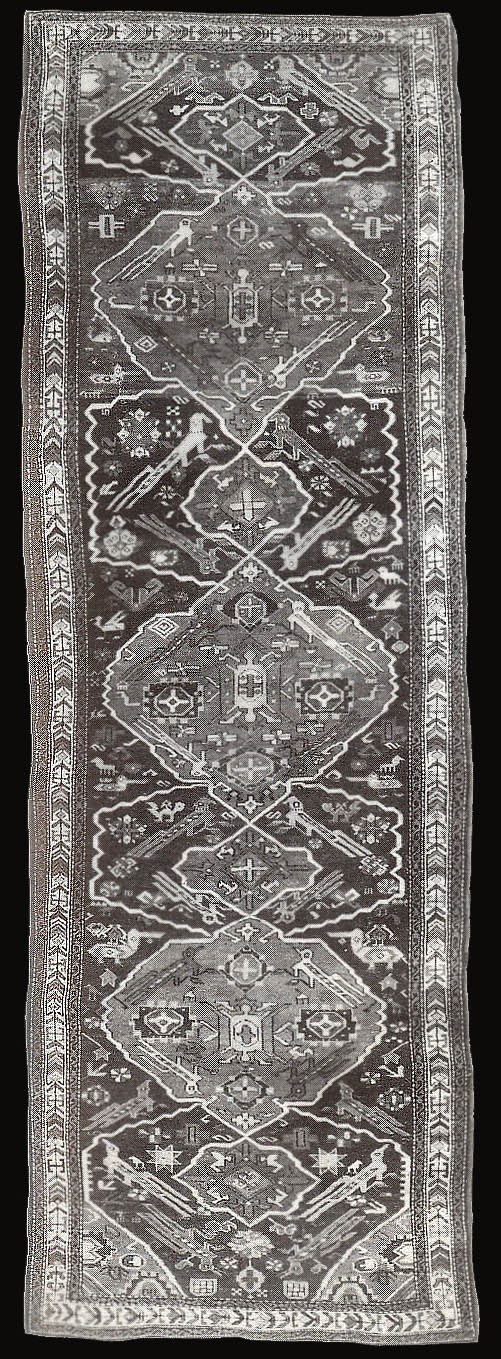|
390 This piece is a
distinct oddity, although a very interesting one. So often in the study of
19th century tribal and village weaving one reads that such-and-such a motif
is a highly stylised and degenerate rendering of a bird or animal figure,
the totemic significance of which was once clearly understood by the weaver,
who would obviously draw it with great clarity so that it would more
effectively perform its intended mystical function. As centuries went by and
peoples were subjugated, dispersed or forcibly converted, the old totemic
images slowly became diffused and misunderstood, thus beginning the gradual
process of simplification and stylisation, so that, eventually, little of
the original motif remained. In the discussion of 389, we remarked that the
figures at the corners of the diamonds almost certainly represented highly
degenerate bird figures. We then look at 390 which seems no older but has a
far more archaic design — we can see four clearly recognisable birds
surrounding diamond-like medallions; each system is contained within a
vertical row of alternate pseudo-diamonds and rectangles. Many other bird
and animal figures scattered throughout the field, some of which are
distinctly bizarre - there are two white figures two-thirds of the way down
which look like crosses between an elephant and a duck, each having what
would appear to be a headless rider standing on its back ! How such an
anachronism of a rug came to be woven at the end of the 19th century it is
difficult to explain. It may possibly be a copy of a very old Caucasian or
even Persian rug, dating possibly to the 16th century (it has some
affinities with Safavid garden carpets), or it may be the product of
interpretative prompting on the part some outsider. The large medallions are
in dark blue and red on a mid-blue ground. Second half 19th century. 283 x
93 cm
Lit: Ian Bennett's Oriental Rugs Volume I
published Ian Bennett's Oriental Rugs Volume I, plate 390
 |
